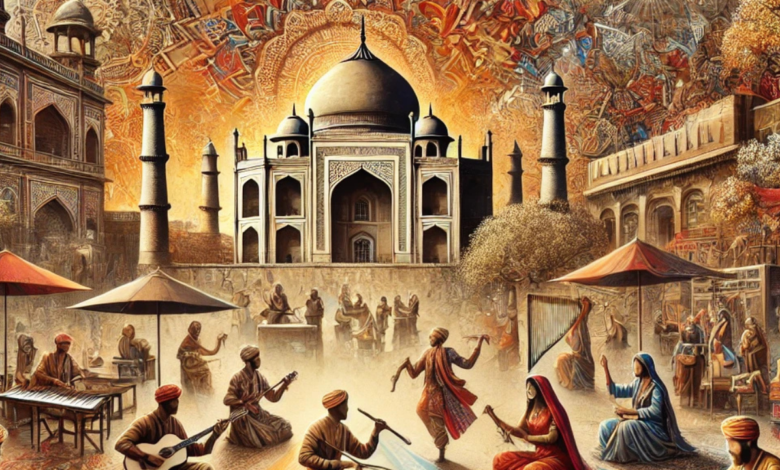The World of Agrawau: Unveiling History, Significance, and Legacy

Introduction
Agrawau is a term that resonates with history, culture, and tradition. While its origins may seem enigmatic to many, they are profoundly significant in shaping the socio-cultural framework of certain communities. This article delves into the essence of Agrawau, exploring its historical roots, modern-day relevance, and enduring legacy. By the end, you’ll gain a deeper appreciation for this remarkable heritage aspect and its timeless impact.
This article aims to provide a thorough understanding of Agrawau, shedding light on its origins, cultural importance, and future potential. Whether you are a history enthusiast or simply curious about cultural traditions, this journey through Agrawau promises to be enlightening and engaging.
Historical Origins of Agrawau
Agrawau’s history is deeply rooted in ancient traditions, with its origins often linked to specific regions known for their rich cultural heritage. While the exact timeline of its inception remains a topic of scholarly debate, references to Agrawau can be found in ancient manuscripts, folklore, and oral histories passed down through generations.
Historically, Agrawau served as more than just a cultural artifact; it symbolized identity and pride for communities that cherished it. It is believed that Agrawau emerged as a way to unify people, fostering a sense of belonging and shared purpose. Communities celebrated Agrawau through festivals, rituals, and communal gatherings, each carrying unique elements that highlighted its significance.
Notable historical figures have also been associated with Agrawau, contributing to its prominence and preservation. Their efforts ensured that Agrawau remained integral to societal and cultural structures, even as external influences began to reshape traditional practices. This historical foundation continues to influence how Agrawau is perceived and practiced today.
The Significance of Agrawau in Modern Times
Agrawau’s significance has evolved while retaining its cultural essence in today’s rapidly globalizing world. For many, Agrawau represents a bridge between the past and present, offering a way to connect with ancestral roots. It plays a crucial role in preserving cultural identity amidst the homogenizing forces of modernity.
Cultural practices associated with Agrawau remain vibrant, albeit with contemporary adaptations. Festivals celebrating Agrawau often feature traditional music, dance, and cuisine, providing a platform for intergenerational learning and bonding. These events uphold age-old traditions and remind them of the values embedded within them—community, resilience, and harmony.
Economically, Agrawau has sparked interest in cultural tourism and artisanal crafts, generating income for local communities. Artisans skilled in creating Agrawau-inspired products have found new markets, both locally and internationally. This has led to a renewed appreciation for craftsmanship and the stories behind these creations.
Agrawau’s influence extends to art, literature, and even modern media. Artists and writers often draw inspiration from its themes, creating works that resonate with contemporary audiences while paying homage to their roots. This fusion of tradition and innovation underscores Agrawau’s relevance in today’s cultural landscape.
The Legacy and Future of Agrawau
Agrawau’s legacy is a testament to its enduring appeal and adaptability. Over the centuries, it has weathered numerous challenges, including colonial interventions, urbanization, and the advent of technology. Despite these obstacles, Agrawau continues to thrive, evolving in ways that ensure its survival without compromising its essence.
One of the primary challenges in preserving Agrawau lies in balancing tradition with modernity. While younger generations may view traditional practices as outdated, efforts to make Agrawau more accessible and relatable have shown promising results. Digital platforms, for instance, have become powerful tools for sharing Agrawau’s stories and practices, reaching global audiences, and fostering a sense of pride among those who identify with it.
The future of Agrawau hinges on collective efforts to safeguard its heritage. Educational initiatives, community-driven projects, and government support can play pivotal roles. By integrating Agrawau into school curricula and cultural programs, future generations can be inspired to carry forward its legacy.
Moreover, Agrawau has the potential to gain global recognition as a symbol of cultural resilience and diversity. International collaborations and cultural exchanges can showcase its richness, paving the way for greater appreciation and respect for its traditions.
Conclusion
Agrawau is more than just a cultural phenomenon; it is a living testament to the enduring power of tradition and community. From its historical origins to its modern-day significance, Agrawau embodies a legacy that continues to inspire and unite people across generations. Its journey, marked by resilience and adaptability, is a powerful reminder of the importance of preserving cultural heritage in an ever-changing world.
As we look to the future, we all have the responsibility to sustain Agrawau. By embracing its values and sharing its stories, we can ensure that Agrawau remains a vibrant and cherished part of our collective history.
Frequently Asked Questions (FAQs)
What does Agrawau mean?
Agrawau is a term with deep cultural and historical significance. It often represents traditions, identity, and unity within specific communities.
Where did Agrawau originate?
Agrawau’s origins are linked to ancient regions known for their rich cultural heritage, with references in manuscripts, folklore, and oral histories.
How is Agrawau celebrated or practiced today?
Agrawau is celebrated through festivals, rituals, and communal gatherings. These often feature traditional music, dance, and cuisine adapted to modern contexts.
Why is Agrawau significant in cultural heritage?
It bridges the past and present, preserving cultural identity, fostering community, and inspiring creativity in various fields.
What are the challenges in preserving Agrawau?
Balancing tradition with modernity, engaging younger generations, and combating the homogenizing effects of globalization are key challenges.
How can individuals contribute to the promotion of Agrawau?
Supporting local artisans, participating in cultural events, and sharing Agrawau’s stories through digital platforms can help preserve and promote its legacy.
You May Also Read: https://bestusatime.com/forbes-connections-hints/



